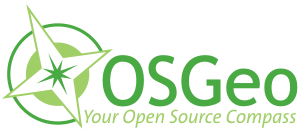Selected Presentations
Home > Presentations > Abstract details
Title
FROM ACADEMIA TO BUSINESS: OPERATIONALISING NEAR REAL TIME WATER QUALITY MONITORING
Abstract
The academic Institute for Environmental Sciences in Amsterdam developed an algorithm to detect and map harmfull algae blooms from satellite images. Originally these maps were produced by hand running Matlab routines producing flat jpegs. The result was a poorly documented, non-scalable, non-transparent solution.
A startup company, Waterinsight, a spinoff of the IES, started developing a handheld spectrometer for quick and reliable in situ measurements of water quality: the WISP3. Measurements from the WISP had to be collected in a spatial database and made available to customers via a web interface.
We will show how the water quality algorithm as well as the in situ measurements were implemented in a completely automated operational monitoring system using purely FOSS(4G) tools. FOSS tools allowed us to very quickly setup a prototype end-to-end system. The system consists of 4 main parts: data collection, storage, analysis and dissemination. This modular setup allows for great flexibility and extendibility. For each main part the tools of choice will be discussed. Among these are: Drupal, Mapserver, Geonetwork, Openlayers, PostGIS, gdal/ogr, python/numpy, R, Git, Trac, Wordpress, Mediawiki and others.
The presentation shows the system from two perspectives: satellite image processing and in situ measurements. These two perspectives each have a unique as well as overlapping set of requirements. Focus will be on what these requirements are and how FOSS tools can solve the problems associated with them. Moreover, the integrated approach resulted in new possibilities. For example in situ measurements are used to validate satellite analysis results. On the other hand, near real time satellite water quality maps can indentify broad areas of interest triggering in situ sampling with the WISP.
Using FOSS(4G) tools enabled us to build a powerful, scalable and transparent monitoring system. Moreover, it was really fun to build.
Authors
Arjen Vrielink - Waterinsight

